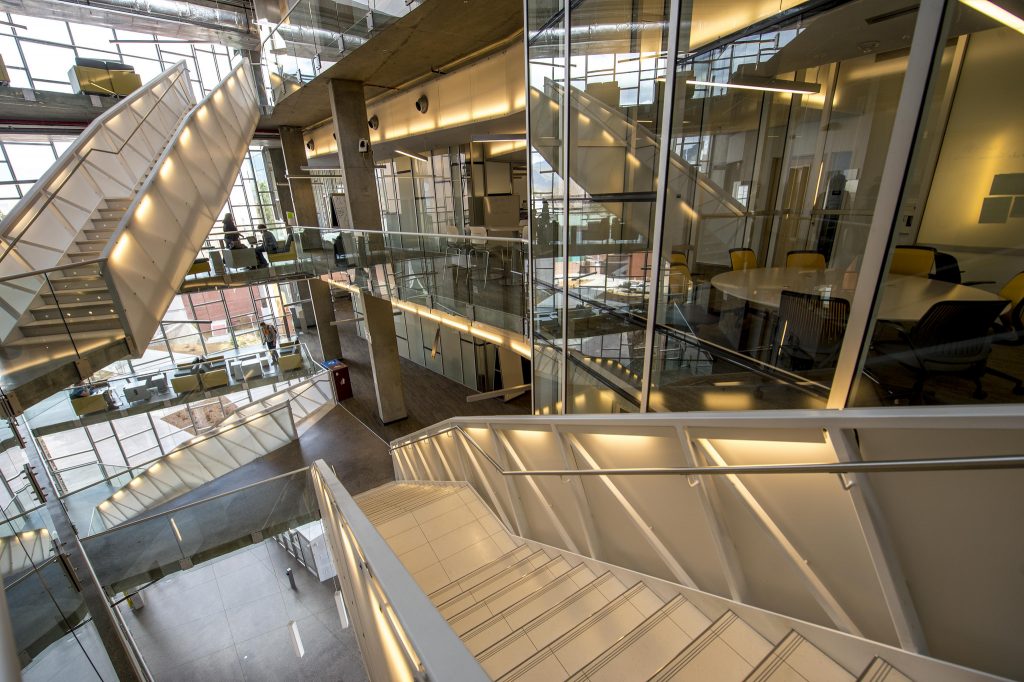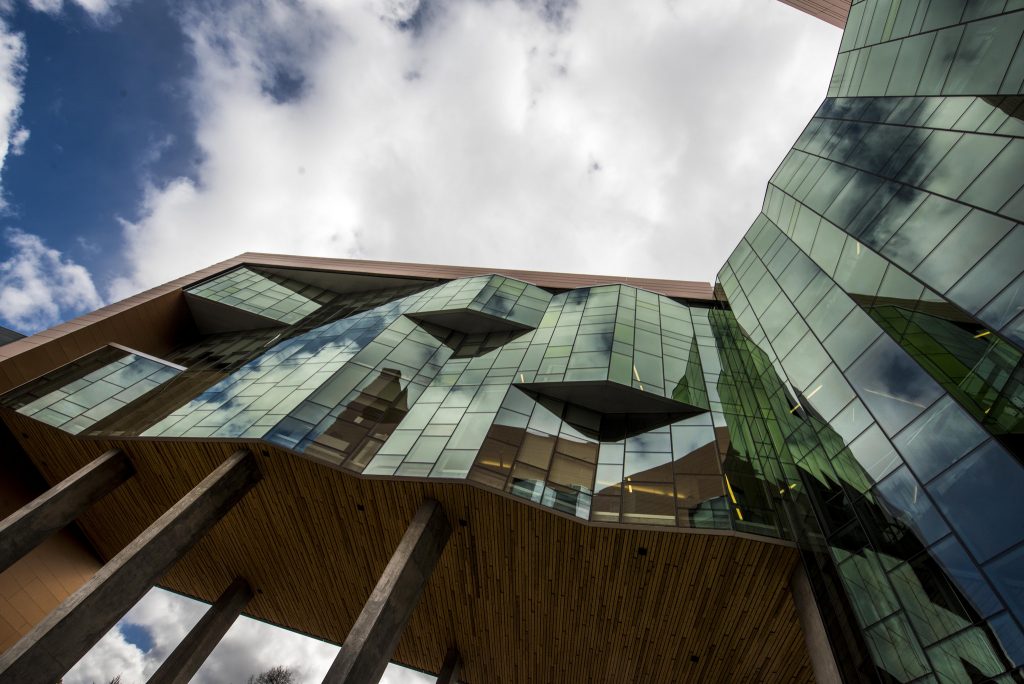Northern Arizona University’s Science and Health building, one of the newest additions to the Flagstaff campus, has been deemed a Gold Leadership in Energy and Environmental Design (LEED) certified building—bringing the total number of LEED certified buildings on campus to 14.
The impressive five-story building is located off the main pedway on north campus and features 54 faculty offices, nine interaction rooms, 10 interaction spaces, 18 research labs, eight instructional labs, five classrooms and three lecture halls with a total capacity of 440 seats.
With mazes of angular staircases, walls of windows providing picturesque views of the peaks and an abundance of natural light, it’s obvious this building was not solely intended to add to NAU’s green building movement.
“Achieving LEED Gold is no simple feat,” said Megan Burke, sustainable building coordinator. “It requires a strong commitment to sustainability and continuous collaboration from all members of the design, construction and operations teams. The Science and Health Building is special because it beautifully illustrates that environmental stewardship can be achieved in a fiscally responsible way, while also keeping building occupant health and well-being as the top priority.”

NAU’s commitment to continue increasing the number of LEED-certified building on campus does not stop with this recognition—the south dining hall renovation project and the upcoming recital hall expansion are pursuing LEED certifications. Cline Library also is pursuing LEED certification through the existing buildings rating system.
“NAU’s planning, design and construction project managers look for opportunities to include sustainable considerations into even our small-scale projects,” Burke said. “NAU’s Complete Design Guidelines and Technical Standards encourage the exploration of sustainable, energy-efficient pathways even when projects are not pursuing LEED certification.”



